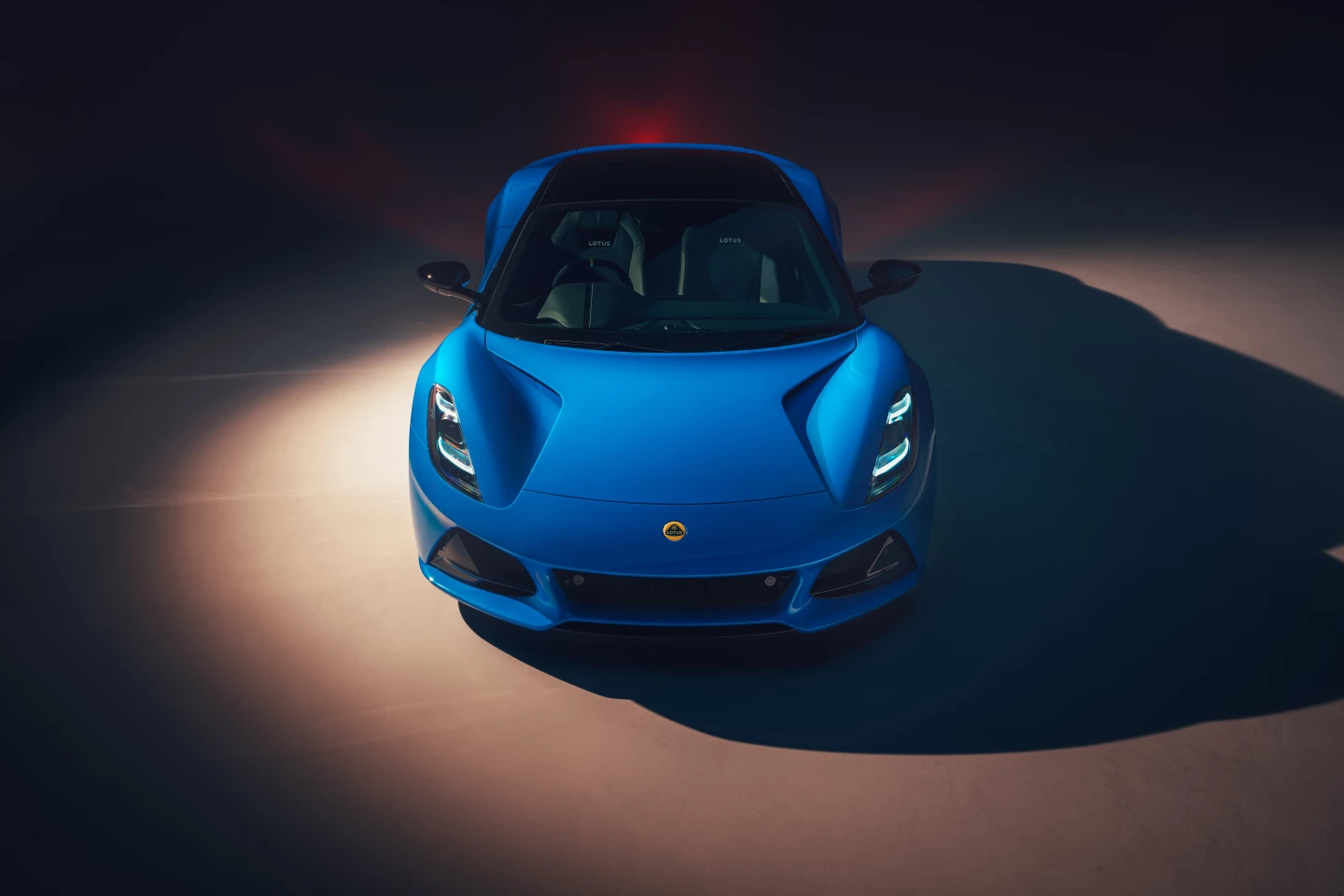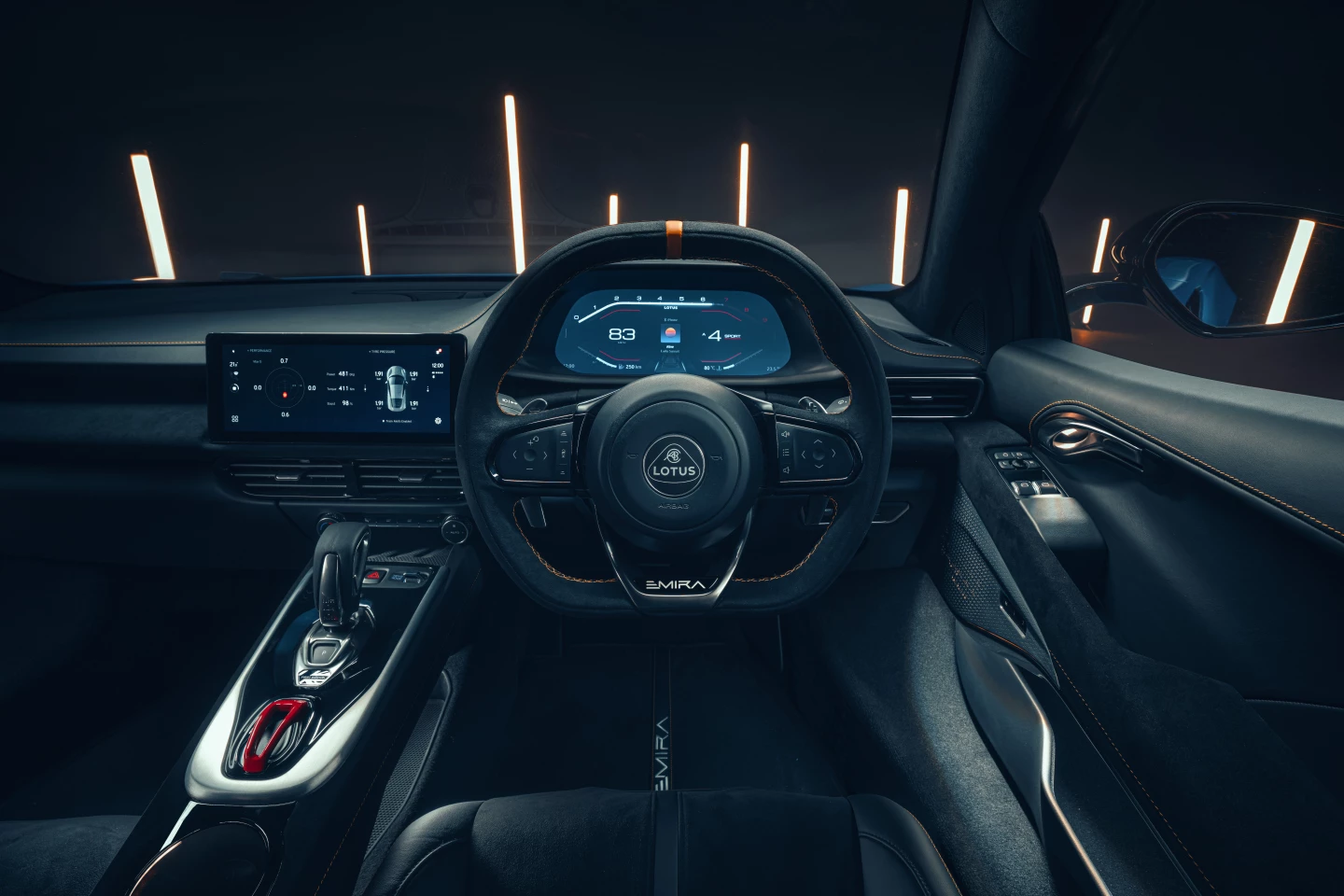Twenty-five years ago, in the heyday of small, light, affordable roadsters, the Elise debuted as a more attainable, everyman's breed of Lotus that became known as much for the market-pioneering, world record-pushing cars for which it laid the foundation as for its own impressive attributes. The Elise and its Exige and Evora siblings step aside this year and leave the spotlight to the all-new Emira, the last Lotus destined to be powered by internal combustion. The Emira continues in the Elise tradition of small, agile, ultralight performance but puts on a more modern mini-Evija set of clothes over top a comfortable, everyday-driver interior.
The hard-top Emira leaves the past behind and wears the design language of Lotus' future, benefiting from a trickle-down of modern cues from the 2,000-hp Evija hypercar. That's apparent the second it noses into the garage, flashing its dual-tiered LED headlamp blades and large, sharply carved hood vents.

The Emira profile shows an Evija-like combination of dramatic curves and highly defined edges and creases, packing them into its 174-in (4,412-mm) length. The Emira's rear-end gets filled in compared to the Evjija's network of caverns but still wears a pair of prominent vents for shedding air.
Lotus will offer two engines with which to fill the Emira's mid-mounted bay, starting with the well-known 3.5-liter Toyota supercharged V6 currently getting things done in the Exige and Evora. In mid-2022, it will add a new Mercedes-AMG-built 2.0-liter turbocharged I4. Both units will fire power to the rear wheels through buyer's choice of manual, automatic or dual-clutch transmission. With between 360 and 400 hp on tap, the Emira range will be capable of sprinting from standstill to 62 mph (100 km/h) in less than 4.5 seconds and hitting a top speed around 180 mph (290 km/h). Lotus promises that the car's aerodynamics promote a precisely balanced downforce at all speeds.

The Emira's evolution of Lotus' bonded extruded aluminum chassis was developed at the new Lotus Advanced Structures facility a few miles down the road from the company's Hethel HQ. The new Sports Car Architecture gives drivers two suspension and chassis settings, starting with a standard everyday "tour" mode that strikes a balance between sporting performance and soft, comfortable driving. The "sports" mode that comes with the optional Drivers package stiffens the suspension up for sharper response and handling at speed.
It may be a driver's car, but Lotus makes plenty of help available to each driver with a features set that includes adaptive cruise control, anti-collision and lane change assist. Other handy available features include launch control, keyless ignition, rain-sensing wipers, and front and rear parking sensors.
Lotus has its sights set on a target base weight of 3,098 lb (1,405 kg).

Inside, Lotus focuses attention on making the Emira a more comfortable commuter, providing extra elbow room between the fully adjustable driver and passenger seats with lateral support. The cockpit envelops the driver with a boxy wraparound dashboard design, raised shifter, 12.3-in TFT digital instrument panel and 10.3-in infotainment widescreen. An available 10-channel KEF premium sound system delivers an audiophile-grade soundtrack. The 151-L trunk can handle a set of golf clubs or suitcase, and an additional 208 liters of storage space can be found behind the two seats.
Lotus dealers are taking Emira deposits now, and Lotus will build the car at its all-new Hethel production facility, with deliveries to begin in (Northern Hemisphere) spring 2022. Pricing is set to start under £60,000 (approx. US$82,775) and under €72,000 (US$85,000) on the mainland. The Emira will make its public world premiere at the 2021 Goodwood Festival of Speed, which starts on July 8.
Source: Lotus















